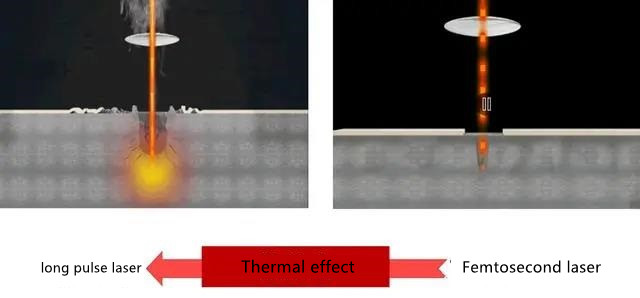
Very high machining accuracy. Different from the "rough" processing of traditional lasers, ultrafast lasers use the strong field effect of lasers to directly break molecular bonds, which can achieve ultra-"precision" cold processing of materials.

Comparison of the effect of long-pulse laser and femtosecond laser on materials (thermal effect)

Comparison of the effect of long-pulse laser and femtosecond laser on materials (processing accuracy)
Copyright @ 2020 Shenzhen Box Optronics Technology Co., Ltd. - China Fiber Optic Modules, Fiber Coupled Lasers Manufacturers, Laser Components Suppliers All Rights Reserved.